
If I ever return to this earth as a pig, this is where I’ll live. It’s Kintoa country; an emerald green patch of piggy paradise in the picturesque Pyrenean foothills of South-Western France. And if that’s not P-erfect enough for you, read on.
Just as all French wines must have an Appellation, so too do rare-breed pigs. The appellation for Kintoa pork extends from the Northern Pays Basque to the Pyrenees Atlantiques, with just a select group of registered breeders, who, since the late 80’s, have rescued the Basque pig from near extinction and at the same time, certified a method of production that’s not only environmentally sustainable, but one that has guaranteed as good a life as any pig might ever dream of.
The name Kintoa dates back to the Kingdom of Navarre (824-1512), Kintoa being the word for a ‘fifth’, which was what the King demanded from every pig farmer’s annual production. In return, the farmers were granted the right to graze their pigs in the fertile fields and mountain forests of the Aldudes Valley. The King’s tax became know as a Kintoa, so when the breed was officially registered, it was only natural that the historic Kintoa name was used to honour its namesake; the utterly adorable, floppy-eared, black and pink pig that you see here.
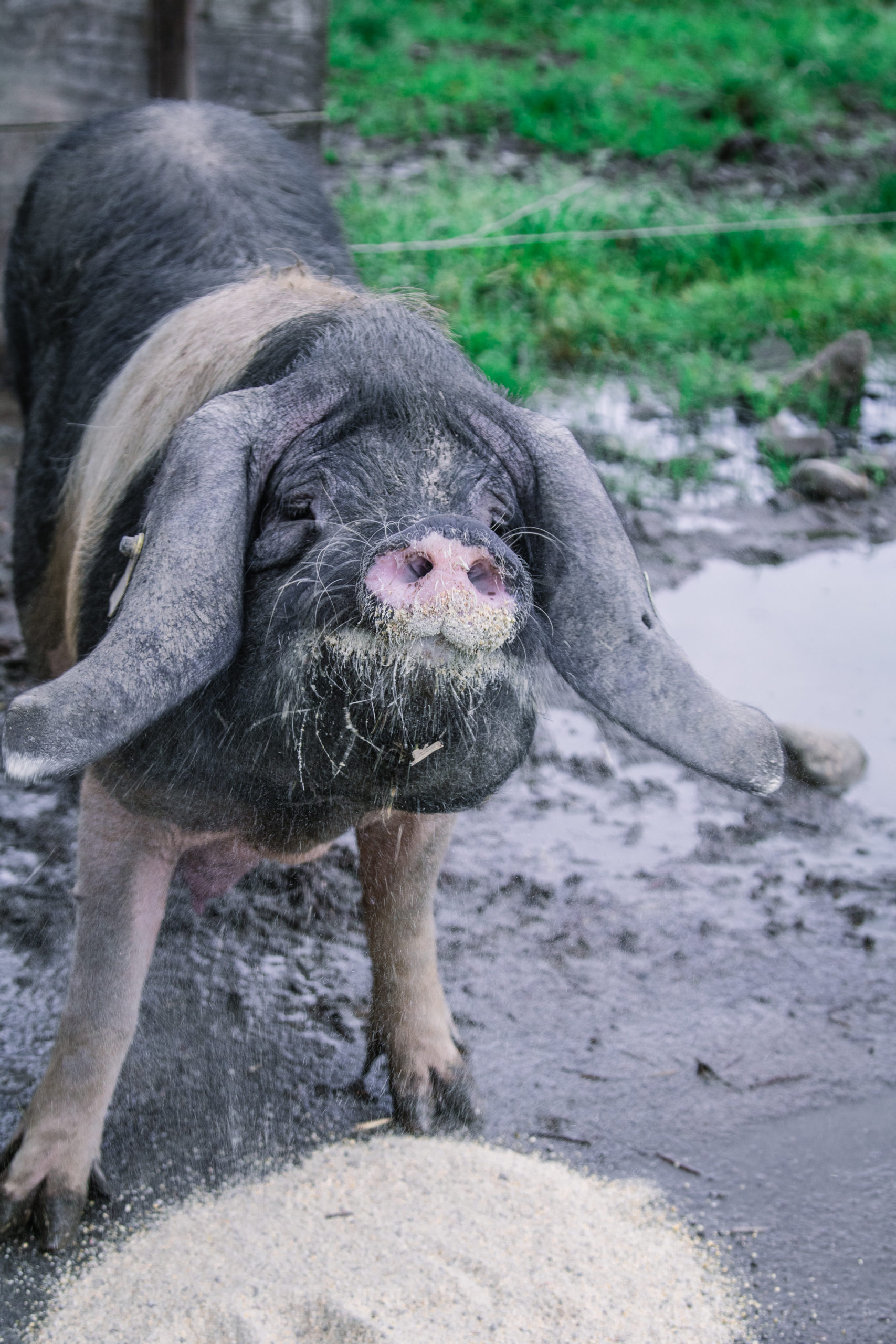
Yesterday I visited the farm of Kintoa pig breeder Mathieu Chapart, just a 5-minute journey by car from Montfort. As you can see from the faces of his happy pigs (yes they really do smile) the life of a Kintoa pig is, quite simply, idyllic.
I started my tour in the barn where the breeding sows are kept; safe from the unwanted attentions of wild boars that roam the forests. It was early evening and they were in the middle of their dinner; a mash of GM-free farm-grown corn. We also paid a visit to the infirmary where some of the retired sows are cared for in what seems to be a rather plush aged care facility; all snug and content in a sea of fresh golden straw. Next door, was one of the prize boars, who was recovering from a stiff shoulder. When I asked Mathieu why the boar’s roommate was so full of beans he explained that it was a young female who was in fact quite well; she was just visiting to give the boar a little ‘encouragement’ to ease him on his way to recovery.
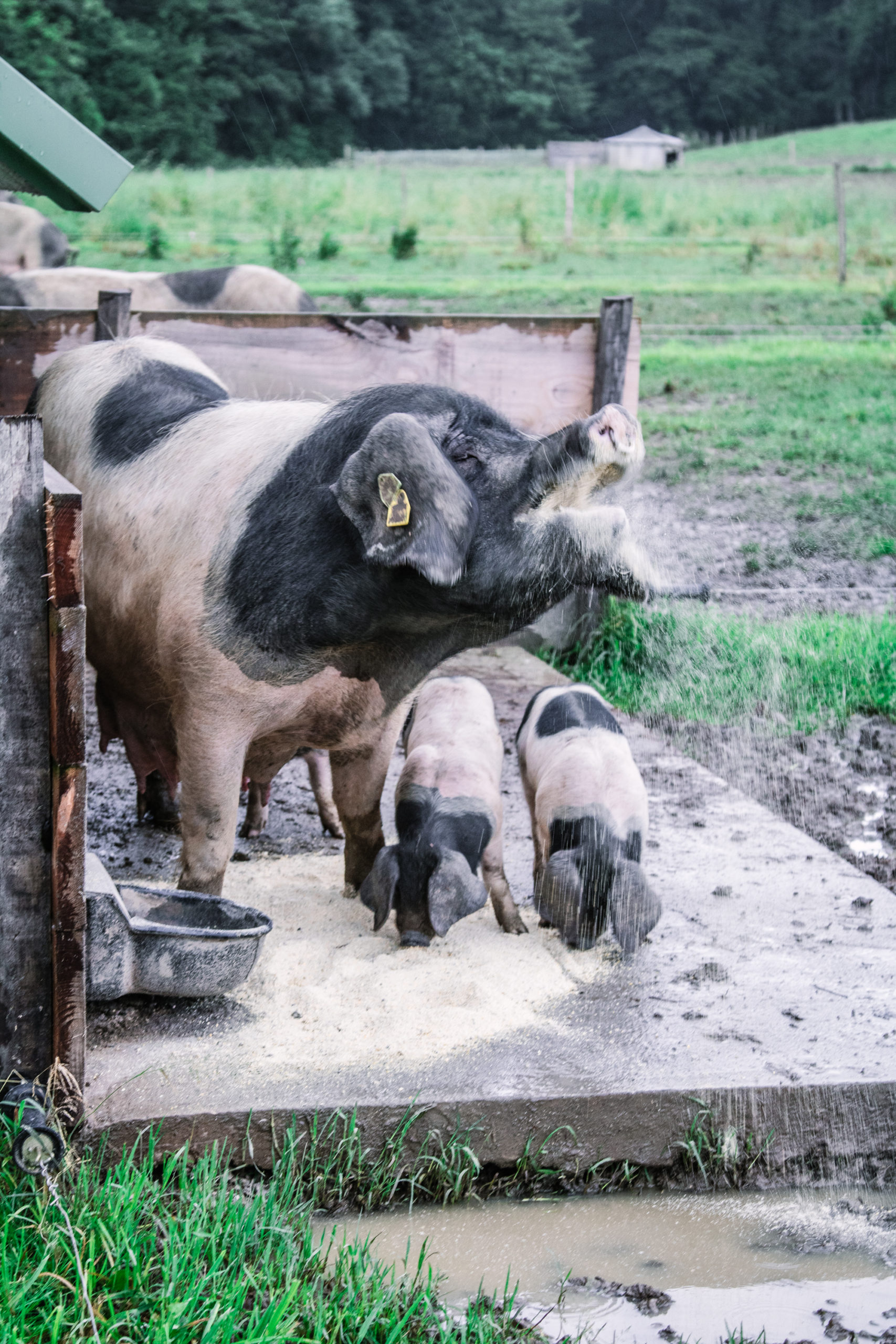
Next on my tour was the nursery field, where sows and their newborn piglets spend some time grazing the fields near the farmhouse. Here, each sow and her piglets has a custom built timber bungalow; raised off the ground and insulated, in order to provide the perfect temperature-controlled environment. The interior is timber-lined, with a draft stopper on the door to ensure there are no chilly winds to bother the nursing sows What’s even more surprising is that inside, the bungalows are immaculately clean and free from any of the expected rural odours. Outside, each bungalow has a private patio; complete with water fountain and beyond that, knee-deep grass for the piglets to play and graze.
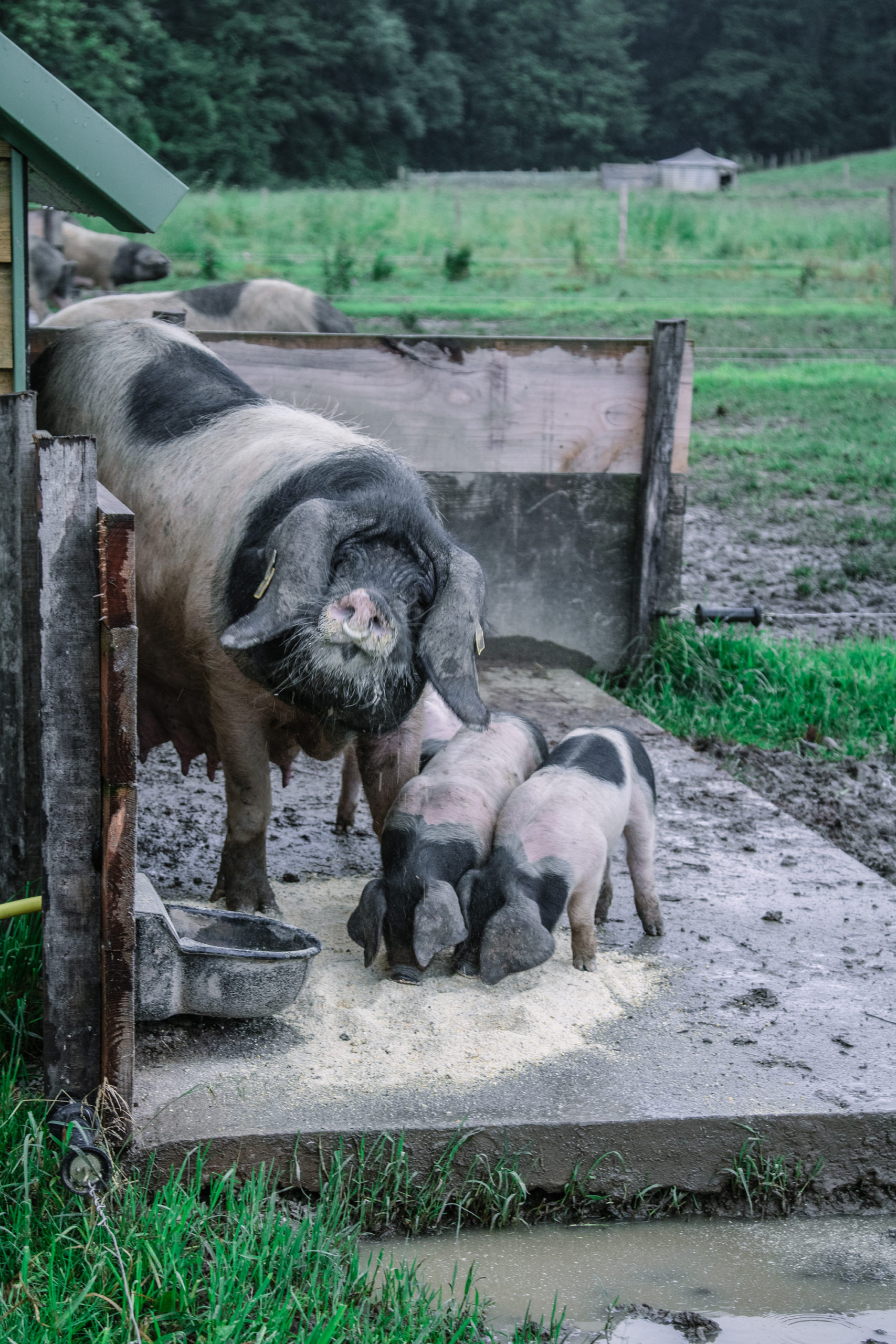
When it’s finally time for the little ones to leave their mothers, the pigs split their time between foraging in the forests and grazing on the sweet grass of the prairies. In fact, to bear the name Kintoa, the diet of a Kintoa pig must include a mixture of grass, native ferns, heather and seasonal nuts from the native oak, hazel and chestnut trees in the forest. If that isn’t enough, they also get a daily snack of GM-free wheat and corn. As a result of their natural free-ranging life outside in the forests and fields they’re less disposed to disease and infection, so in turn, there’s no need to medicate with prophylactic antibiotics, as is the case in battery run commercial pig farms where the pigs are stressed and raised in cramped and artificial conditions.
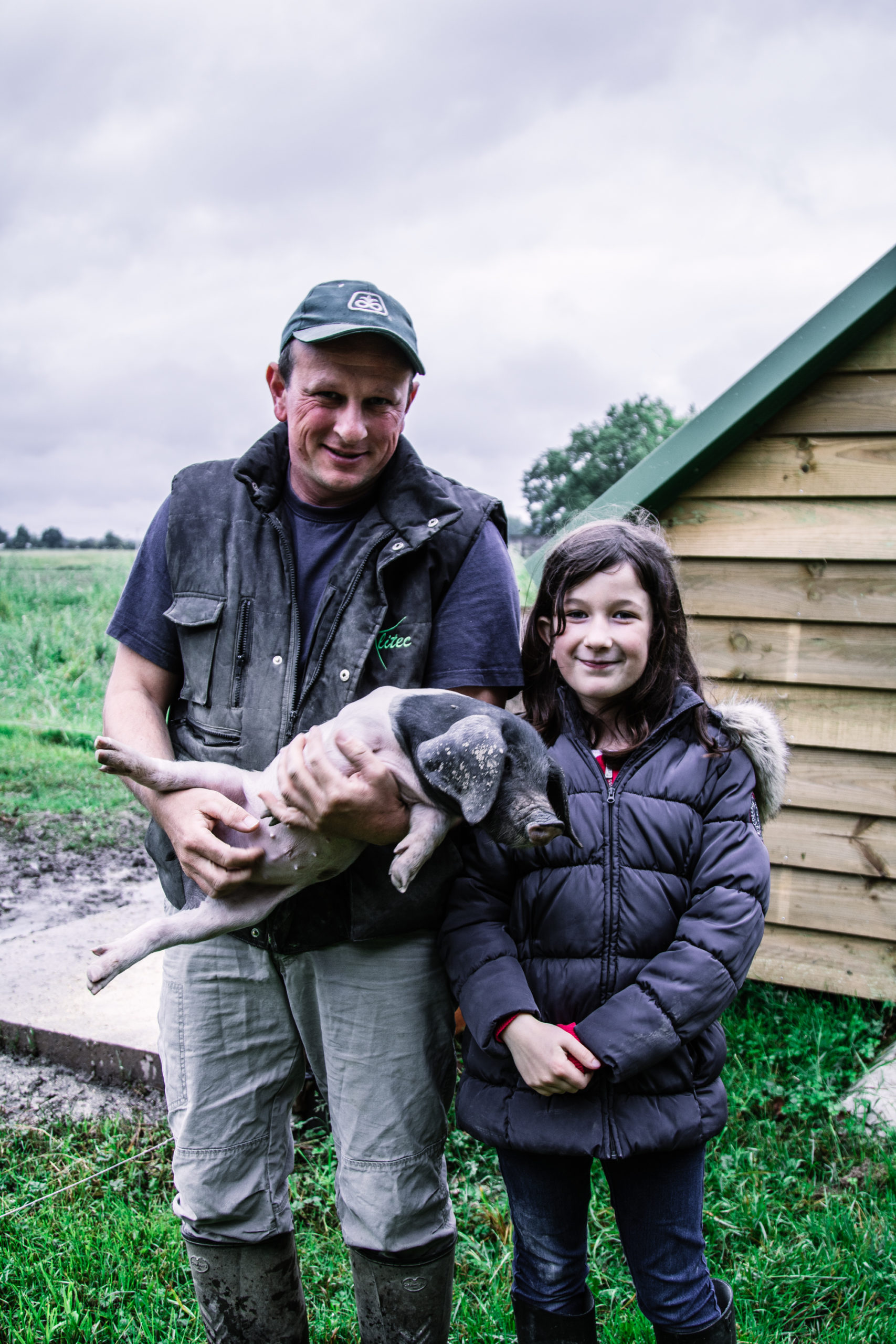
Kintoa farmer, Mathieu Chapart and his daughter Maelys.
So, if this isn’t enough to convince you, here are a few more reasons to love Kintoa Pork:
- The life of Kintoa pig is double that of a commercially raised Great White pig; when Kintoa pigs are eventually slaughtered they’re 18 months as opposed to 6-8 months, but the difference in the quality of life between the two pigs is clearly incomparable.
- To meet the stringent AOP (Appellation Control) requirements, Kintoa farmers must regularly rotate their forests and pastures and due to the artisanal nature of production, pig herds are kept small, reducing environmental impact and assuring the animals greater care and quality of life.
- The fat distribution of the Kintoa breed is far better than commercial pigs, resulting in a better flavour, which is enhanced by their naturally foraged diet and active outdoor lifestyle.

Last year I visited the annual Kintoa fair, where you can meet the producers and sample both the ham and the meat. If you make your gastronomic debut into Kintoa pork, this is the place to do it, least of all for the tasting plates by top chefs including Iñaki Aizpirtarte, Cédric Baudour, Antoine Chépy, Fabien Feldman and Aneth & Cerfeuil. It’s an opportunity to ask questions, meet the farmers and see the pigs, often snoozing under the shade of the traditional Basque pig house; a wooden hut resembling a miniature hobbit house, topped with a bracken fern roof.
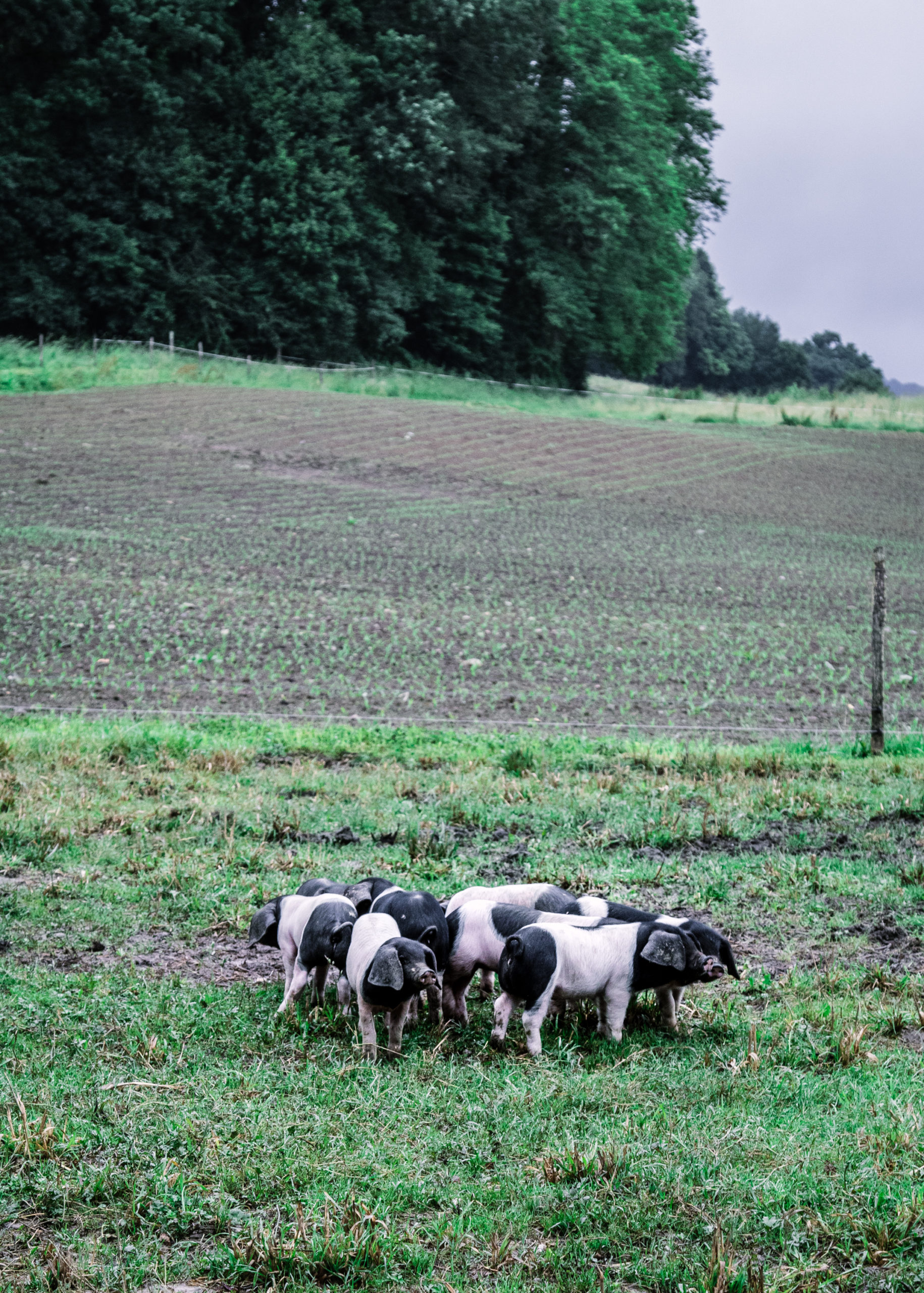
I’m not a vegetarian, but I believe we should eat less meat, less often. I also believe that the bar-code has been the champion of the commercial meat industry; transforming animals and their welfare into unidentifiable, anonymous ‘cuts’ that come on poly styrofoam trays rather than 4 feet. Modern day life has removed the respect we once had for animals because when once we would have looked every animal in the eye before we slaughtered it, we now merely look into our wallets for a credit card.
In the absence of responsibility for raising our own animals for slaughter, the least we can do is take responsibility for the choice of meat we consume. If you’re not convinced, have a look at this beautiful documentary, produced by Slow Food France. Granted, you may not have access to Kintoa pork as I do, but there is always a better alternative to commercially farmed pork. Even if it’s demanding better farming practices from government or eating less but better quality meat, there is always more we can do. Always.


What an absolutely brilliant, fascinating article. Utterly inspiring. Thanks so much for sharing.
A most interesting and enlightening article. I had never heard of this breed of pig before. My father was a pig farmer here in the UK he bred large white pigs with great care and attention to their well being and welfare, he would have been delighted to have read this article. I love pigs and only wish we could farm them with better standards although there are farmers out there leading way. Thank you for such a great article and well done to all those saving the breed from extinction.